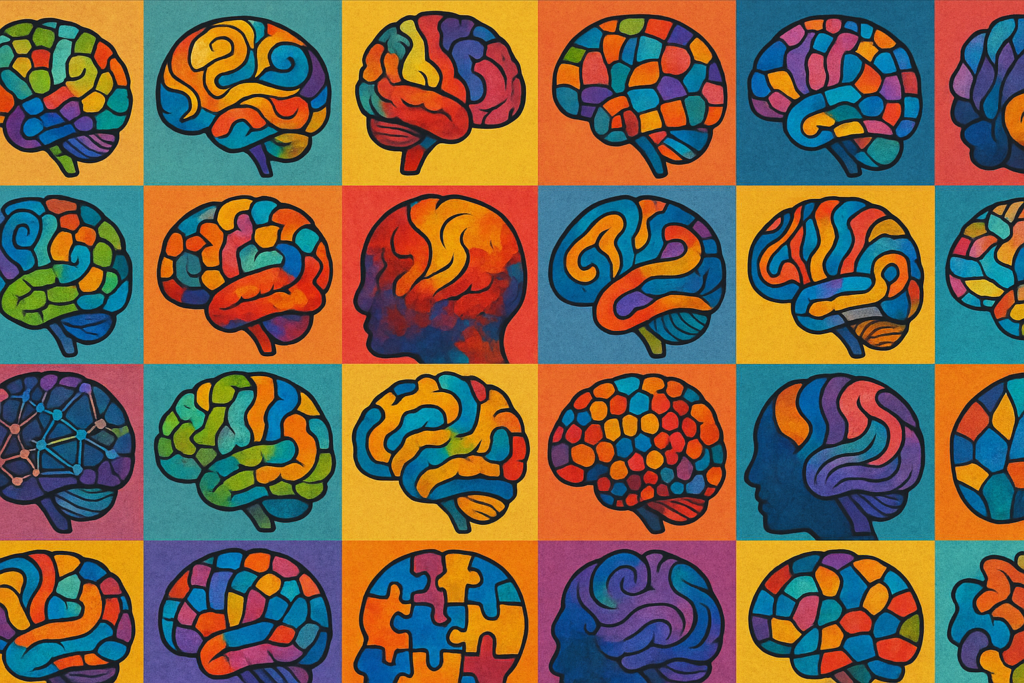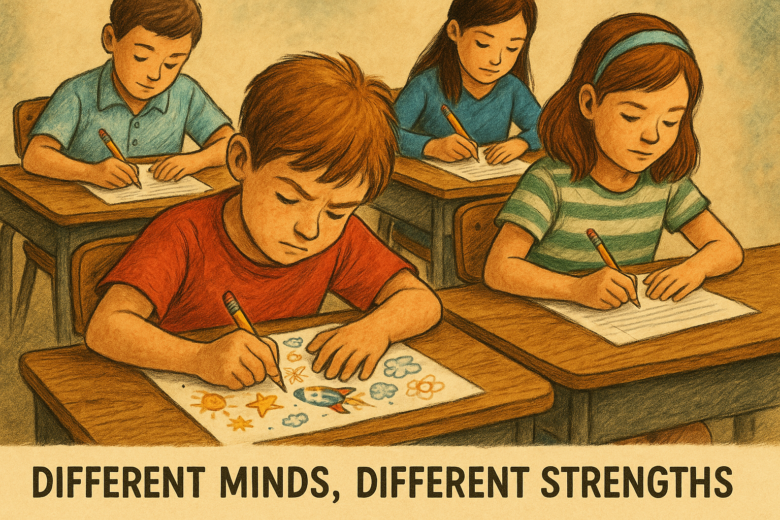Fun Fact: Albert Einstein, who revolutionized physics, is widely believed to have shown traits of autism spectrum disorder (ASD), such as delayed speech and strong visual thinking.
We often throw around the word “normal” like it’s a gold standard. A normal student. A normal worker. A normal mind. But what if normal is a myth—and our schools and offices are built to reward sameness, not brilliance?
This blog is about neurodivergent minds—the thinkers who don’t quite fit the mold but often reshape the world. From classrooms to boardrooms, it’s time to ask: Are we designing our systems to support all minds, or just the ones that play by outdated rules?
What Is Neurodivergence?
Neurodivergence refers to differences in brain function that affect how people think, learn, and interact. This includes people with:
- Autism Spectrum Disorder (ASD)
- Attention-Deficit/Hyperactivity Disorder (ADHD)
- Dyslexia
- Dyspraxia
- Tourette Syndrome
- Obsessive-Compulsive Disorder (OCD)
- Sensory Processing Disorder
Coined in the 1990s by sociologist Judy Singer (herself autistic), the term neurodivergent reframes these differences not as deficits—but as natural variations in the human brain.
And just like biodiversity makes an ecosystem stronger, neurodiversity makes human systems smarter, more creative, and more resilient—if we allow it.
The School System: Built for the “Average” Mind
Let’s start with school—a place meant to nurture young minds, yet often designed for just one type.
The typical classroom rewards students who sit still, follow routines, process information verbally, and perform under time pressure. But what about the child who:
- Thinks better while pacing?
- Hears every tick of the clock louder than the teacher’s voice?
- Needs more time to read, but can invent entire worlds in their head?
Too often, these students are labelled as “difficult,” “lazy,” or “slow,” when in fact, their brains may just be wired differently. Not wrongly—differently.
Case Study: The Girl Who Couldn’t Read
Riya, 9, from Mumbai, was diagnosed with dyslexia after struggling with reading for years. Teachers thought she lacked focus. But with a diagnosis, accommodations, and support from an educational therapist, she began to thrive. Her oral storytelling? Off the charts. Today, she’s writing fantasy scripts on her iPad—and mentoring younger students with dyslexia.
Dyslexia, a neurodivergent condition affecting reading, is estimated to affect 10–15% of the population—yet remains underdiagnosed and misunderstood, especially in India.

Standardized Testing: One Size Fails All
Let’s talk exams.
Timed tests. Rote memorization. Single correct answers.
This system punishes many neurodivergent students, especially those with ADHD (Attention-Deficit/Hyperactivity Disorder), processing delays, or anxiety-related conditions. These students often understand the material—but can’t perform in the format forced upon them.
Alternatives like oral assessments, project-based evaluation, and assistive tech tools are rare in mainstream Indian education, where marks still matter more than mastery.
Neurodiversity at Work: The Untapped Superpower
Now shift the scene to a modern workplace.
Imagine a new hire—brilliant at spotting data patterns but avoids eye contact. Or someone who thrives in solitude, but dreads open-plan offices. Or an employee who hyper-focuses on a coding problem for hours—but forgets to answer emails.
These traits might sound like red flags in a conventional HR manual. But they might also describe some of the most innovative thinkers out there.
Enter Neurodiversity Hiring
Global firms like SAP (a German software company known for enterprise resource planning solutions) and Microsoft (a U.S.-based tech giant developing software, cloud computing, and AI services) have launched neurodiversity hiring programs, actively recruiting autistic talent for roles in analytics, coding, and cybersecurity.
And they’re not doing it out of charity. They’re doing it because it’s smart business.
In one study, neurodivergent employees were found to be 30% more productive in certain tasks compared to their neurotypical peers—especially in pattern recognition, error detection, and system analysis.
The Double Struggle: Masking and Burnout
But here’s the emotional toll.
Many neurodivergent people spend years masking—consciously mimicking neurotypical behaviour to fit in. Suppressing stimming (repetitive movements), forcing eye contact, over-preparing for conversations, and working double just to “seem normal.”
This leads to burnout. Anxiety. Depression. Identity loss.
When workplaces and schools don’t accept differences, people either break—or they hide. Neither is a win.

Beyond Inclusion: Designing for Neurodivergence
Inclusion isn’t just about hiring a few neurodivergent folks or offering special classes. It’s about universal design—creating systems that work for everyone from the start.
Here’s what that might look like:
In Schools:
- Flexible seating and movement breaks
- Visual aids alongside text
- Noise-cancelling headphones
- Multiple modes of assessment
- Teacher training in neurodiversity
In Workplaces:
- Quiet rooms and flexible hours
- Written and verbal communication options
- Job coaching and mentorship
- Strength-based evaluations
- Clear expectations, less jargon
The Cultural Shift We Need
In India, neurodivergence still carries stigma. It’s seen as a problem to be fixed, hidden, or pitied. Families often hesitate to seek diagnoses. Schools lack trained professionals. Workplaces rarely talk about it.
But things are changing.
Awareness is growing through advocacy groups, films, and personal storytelling. Parents are pushing for inclusive education. Young people are finding vocabulary to describe their minds. And slowly, we’re asking: what if the system is broken—not the student?
Conclusion: What If ‘Normal’ Is the Real Illusion?
Normal is a moving target. What counted as normal 50 years ago is obsolete today. And in 50 years, today’s rigid systems will look absurd.
Neurodivergent people don’t need our pity—they need our respect. They need space to think differently, work differently, and live fully without apology.
Because the future doesn’t belong to the “normal” mind, it belongs to minds that can imagine what no one else sees—and dare to build it.
Author’s Note
Neurodivergence isn’t a diagnosis—it’s a perspective. If this blog makes you think differently about someone in your class, team, or family, then it’s done its job. Let’s stop asking people to change their wiring—and start changing the system.
G.C., Ecosociosphere contributor.
References and Further Reading
- https://www.ncbi.nlm.nih.gov/pmc/articles/PMC6038991/
- https://www.bbc.com/worklife/article/20220518-the-rise-of-neurodiversity-in-the-workplace
- Neurodivergence & Therapy Explained – Robert Rackley Counselling. https://www.robertrackley.ie/what-to-expect/
- Gaining Understanding: What is Neurodiversity?. https://allinc.org/blog/what-is-neurodiversity/




